We haven’t made as much progress as we wanted, or is needed, on decarbonising the aviation sector, IATA Director General Willie Walsh said in his end-of-year industry briefing to the media in Geneva. Blame was attached to governments and big oil producers for the slow investment in sustainable aviation fuel facilities, with anticipated SAF production in 2024 falling significantly short of IATA’s own expectations. Aircraft and engine manufacturers also came in for criticism over supply chain challenges that had resulted in a big shortfall of new, more fuel-efficient aircraft deliveries this year, with the result that the global fleet was on average older than ever, leading to environmental and economic consequences. However, the airline industry as a whole is on the road to a full recovery from the pandemic and global passenger numbers in 2025 are expected to pass the five billion mark for the first time, although the sector’s CO2 emissions may also reach an all-time high.
Commenting on efforts to decarbonise the airline sector at IATA’s annual Global Media Day, Walsh said: “We needed to build on the slow progress that we have seen so far, which we had expected to improve in 2024 but we’re not at the levels we had hoped to be and we need to see greater awareness on the part of governments around the world.
“This isn’t just to do with sustainable aviation fuels, it’s about the wider transition to a net zero global economy in 2050. We’re not asking for special treatment for the airline industry, we’re just looking for the same support other industries have received in their energy transition.
“We need governments to recognise that they have a huge role to play. This can’t happen by the efforts of the airline industry alone. It must involve every player to ensure we hit the critical net zero emissions target in 2050.”
Meanwhile, the global airline industry itself is enjoying a return to the good times after Covid-19, with profitability likely strengthened still further in 2025 despite ongoing aircraft and engine supply chain challenges. Net profits are expected to be $36.6 billion in 2025 on revenues that will exceed $1 trillion for the first time – an increase of 4.4% from 2024 – and a net profit margin of 3.6%.
“This will be hard-earned as airlines take advantage of lower oil prices while keeping load factors above 83%, tightly controlling costs, investing in decarbonisation and managing the return to more normal growth levels following the extraordinary pandemic recovery,” said Walsh. “All these efforts will help to mitigate several drags on profitability that are outside of airlines’ control, namely persistent supply chain challenges, infrastructure deficiencies, onerous regulation and a rising tax burden.”
Passenger numbers are expected to reach 5.2 billion in 2025, a 6.7% rise compared to 2024 and the first time that this number will have exceeded the five billion mark.
Passenger demand (RPKs) is expected to grow by 8.0% in 2025, which is ahead of a 7.1% expected expansion of capacity (ATKs). Aircraft departures are forecast to reach 40 million, an increase of 4.6% from 2024, and the average passenger load factor is anticipated at 83.4%, up 0.4 percentage points from 2024.
IATA says its public opinion polling showed 41% of surveyed travellers said they expect to travel more in the next 12 months compared to the last 12 months, 53% expected to travel at the same frequency and just 5% said they expect to travel less.
Cargo volumes are expected to reach 72.5 million tonnes, a 5.8% increase from 2024.
A less welcome increase is in the average age of the global aircraft fleet as this has a negative impact on fuel efficiency, and therefore emissions intensity, as older aircraft are retained longer. According to Marie Owens Thomsen, IATA’s Chief Economist and SVP Sustainability, the long-term average age of the global fleet over the period since 1990 had been 13.6 years, whereas in 2024 the average age had reached 14.8 years, a record.
This is seen largely as a consequence of the supply chain issues, with new aircraft deliveries falling sharply from the peak of 1,813 aircraft in 2018. The estimate for 2024 deliveries is 1,254 aircraft, a 30% shortfall on what was predicted going into the year. In 2025, deliveries are forecast to rise to 1,802, well below earlier expectations for 2,293 deliveries. IATA foresees further downward revisions in 2025 “as quite possible”. The backlog for new aircraft has reached 17,000 planes, it says, which would take 14 years to fulfil at present delivery rates, although this should shorten over time.
“Supply chain issues are frustrating every airline with a triple whammy on revenues, costs and environmental performance,” said Walsh. “Load factors are at record highs and there is no doubt that if we had more aircraft they could be profitably deployed, so our revenues are being compromised. Meanwhile the ageing fleet that airlines are using has higher maintenance costs, burns more fuel and takes more capital to keep it flying.”
IATA says fuel efficiency, excluding the impact of load factors, was unchanged between 2023 and 2024 at 0.23 litres/100 ATKs, against a long-term trend (1990-2019) of annual fuel efficiency improvements in the range of 1.5 to 2.0%. If load factors were taken into account, fuel efficiency showed a marginal year-on-year improvement, from 4.3 litres/100 RPKs in 2023 to 4.2 litres/100 RPKs in 2024.
“The entire aviation sector is united in its commitment to achieving net zero carbon emissions by 2050. But when it comes to the practicality of actually getting there, airlines are left bearing the biggest burden. The supply chain issues are a case in point,” said Walsh. “Manufacturers are letting down their airline customers and that is having a direct impact of slowing down airlines’ efforts to limit their carbon emissions. If the aircraft and engine manufacturers could sort out their issues and keep their promises, we’d have a more fuel-efficient fleet in the air.
“We’ve been patient so far but that patience is running out and the situation is unacceptable. We are dealing with quasi monopoly suppliers who are abusing their position and this is an issue we need to look at.”
He added the performance of aircraft engines had also been “nowhere near where they should be.”
Against a backdrop of falling jet fuel prices, airlines’ cumulative fuel spend is expected to be $248 billion in 2025, a decline of 4.8% despite a 6% rise in the amount of fuel expected to be consumed – 107 billion gallons. Fuel is forecast to account for 26.4% of operating costs in 2025, down from 28.9% in 2024.
IATA’s expected 2025 jet fuel consumption of 107 billion gallons translates into around 324 million tonnes, so global CO2 emissions from the airline sector are likely to pass the one billion tonne mark in 2025 for the first time.
The cost of purchasing carbon credits to comply with ICAO’s CORSIA offsetting scheme, which started coming through in 2024, is estimated by IATA at $700 million, and forecast to rise to $1 billion in 2025. The costs for the limited quantities of sustainable aviation fuel available are estimated to add $3.8 billion to industry fuel costs in 2025, up from $1.7 billion in 2024.
On SAF, Walsh doesn’t foresee a linear growth in use although expects exponential growth beyond 2035.
“But we need to get building SAF production facilities today,” he said. “We can use existing refineries for co-processing, where blending is currently limited to 5% but has the potential to increase to 30%. This would have a major impact on capital expenditure requirements and could be achieved reasonably quickly.
“Where we have not seen as much progress as we would have liked is investment in new biorefineries. We need to call out those big fuel producers who have pulled back from their commitments to produce sustainable fuels – they need to play their part, we can’t just rely on new entrants.”
There is evidence, he said, that where jet fuel suppliers had been mandated to include SAF but had not done so and fined as a consequence, they had passed on the cost to airlines. “They don’t care if they get fined and this is a clear case where mandates make no sense whatsoever. There is zero environmental benefit. Politicians aren’t asking themselves if these measures are going to lead to the intended results. It’s disappointing and there needs to be more honesty in this debate.”
According to analysis by IATA, SAF production volumes in 2024 reached 1 million tonnes (1.3 billion litres), double the 0.5 million tonnes produced in 2023, and accounted for 0.3% of global jet fuel production and 11% of global renewable fuel. It says this is “significantly” below its previous projection for 2024 of 1.5 million tonnes, which it partially attributes to key SAF producers in the US pushing back their ramp up to the first half of 2025.
SAF production in 2025 is expected by IATA to reach 2.1 million tonnes, or 0.7% of total jet fuel production.
“SAF volumes are increasing, but disappointingly slowly,” commented Walsh.
Editor’s note: The second part of this report from IATA’s end-of-year industry analysis, which will focus on SAF, will follow next month.
Photo: IATA’s Marie Owens Thomsen and Willie Walsh


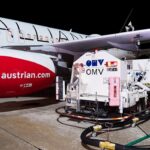
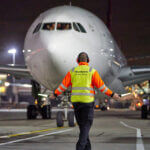
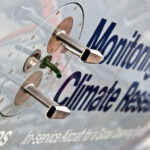



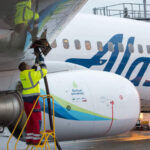
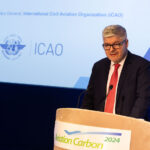

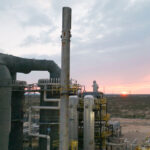
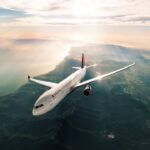
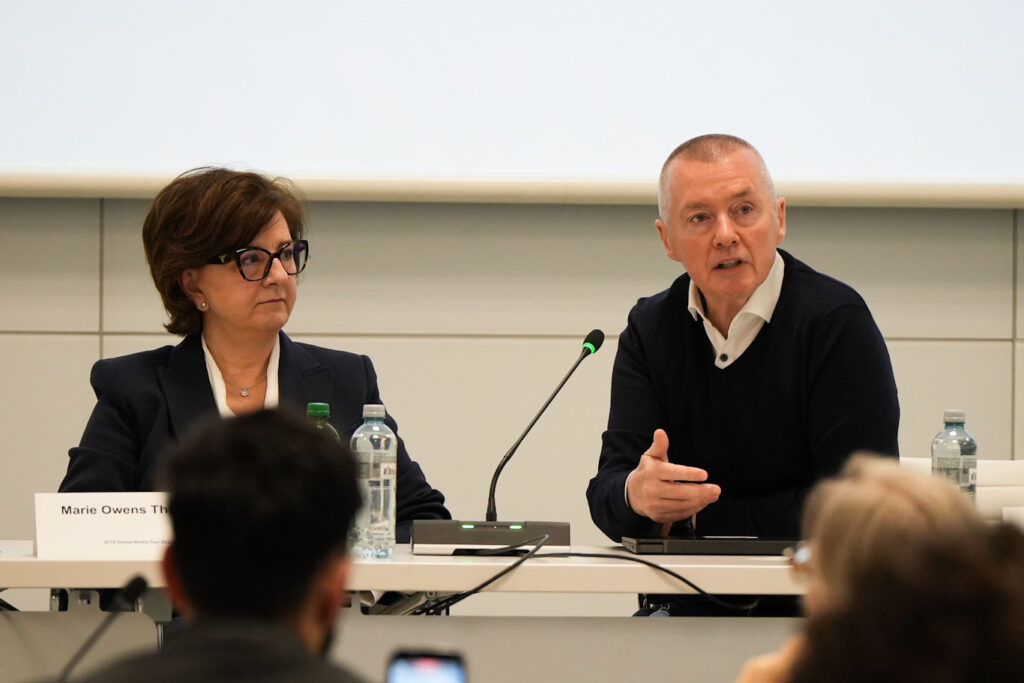


More News & Features
EASA releases status report on Europe’s SAF production and readiness to meet blending targets
UK government sets out new Jet Zero focus and launches consultation on CORSIA global emissions scheme
European and US research programmes expand to better understand aviation non-CO2 climate effects
T&E joins aviation and climate scientists in urging action to reduce warming contrails
New study highlights differing strategies and barriers to decarbonising aviation in UK and Europe
Commentary: China’s fair and equitable solution to civil aviation’s climate challenge